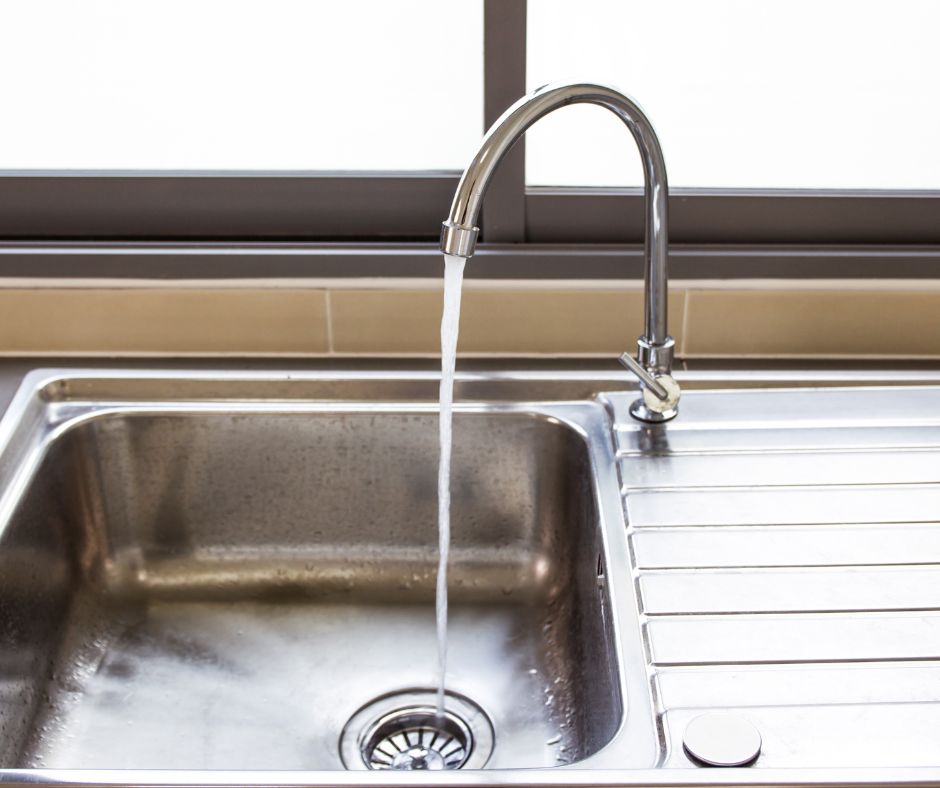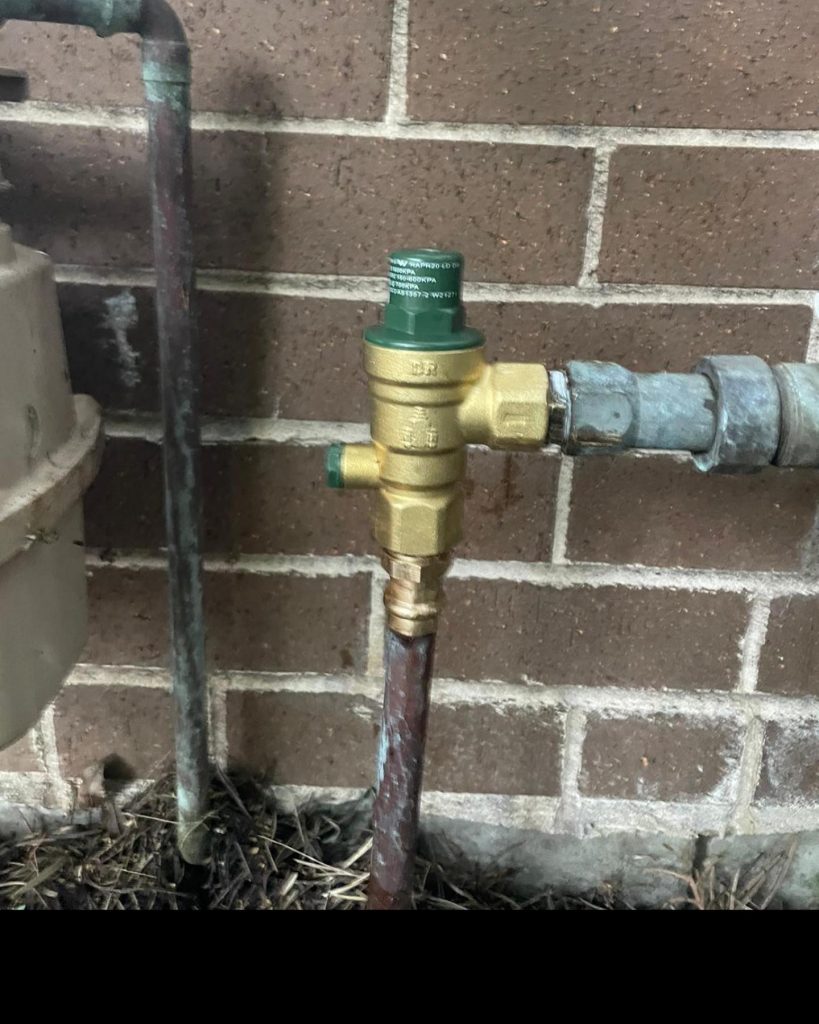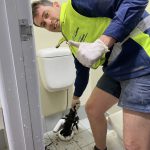Experiencing low water pressure can significantly hinder your daily activities, making essential tasks like showering and washing dishes difficult and frustrating. The good news is that most issues related to water pressure can be effectively addressed. In this detailed guide, you will learn how to diagnose and resolve common water pressure problems in your home. This resource is provided by Plumbmaster Plumbing, the leading expert in high-quality plumbing services serving Sydney's Hills District.

Identify the Most Common Causes of Low Water Pressure
To effectively tackle water pressure problems, it's essential firm understand their potential causes. Below are some of the most prevalent issues that you might encounter:
1. Partially Closed Valves
One of the leading causes of low water pressure is valves that are not fully opened. It's crucial to check both your main shut-off valve and any secondary shut-off valves in your home. The main shut-off valve is typically located near the water meter or on the street and should be completely open to ensure maximum water pressure. Even a slight closure can significantly restrict water flow.
2. Clogged Pipes
Over time, pipes can become clogged due to the accumulation of minerals and sediment, especially in homes with hard water. This buildup reduces the effective diameter of the pipes, which in turn slows the flow of water. If you notice a pattern where the water flow starts strong but quickly diminishes, it could indicate pipe clogging. Regular maintenance is essential to prevent this issue.
3. Corroded Pipes
In older homes, galvanized steel or iron pipes are often prone to corrosion, severely restricting water flow and leading to pressure-related issues. Corroded pipes not only diminish water pressure but can also cause other problems, such as leaks, discolouration of water, and unpleasant tastes. Proactively addressing corroded pipes is vital for maintaining a healthy plumbing system and ensuring clean water delivery.
4. Leaks in the System
Leaks are another common reason for low water pressure, as water can escape through small holes or cracks in the plumbing system instead of reaching your faucets. Signs of a leak may include damp spots on walls or floors, unexpected puddles in your home, or a sudden increase in your water bill. Regular inspections are essential to detect and repair leaks promptly.
5. Issues with the Water Supplier
Sometimes, the problems related to low water pressure may not stem from your plumbing system but rather from your local water supplier. Temporary repairs or maintenance work in your area can lead to fluctuations in water pressure. If you suspect this is the case, contacting your water supplier to find out if they are conducting any maintenance that might affect your home's water flow can be beneficial.

Follow This Step-by-Step Guide to Resolve Water Pressure Issues
Once you have pinpointed the potential causes of your water pressure issues, you can implement these practical solutions.
1. Open All Valves Completely
Begin by ensuring that all shut-off valves are fully opened. Even slightly closed valves can create significant restrictions in water flow. Be sure to check the main water valve and any secondary valves throughout your home to ensure they are all in the open position.
2. Clean Aerators and Showerheads Regularly
Aerators on faucets and showerheads can quickly become clogged with sediment and mineral deposits. To address this, unscrew these components, soak them in vinegar for several hours, and then scrub them with a brush to remove any buildup. This straightforward cleaning method can restore water flow and enhance overall water pressure.
3. Flush Your Hot Water System to Enhance efficiencySediment accumulation in your water heater can severely reduce the pressure of hot water. Regularly flushing the tank and the heater can significantly improve the efficiency of water flow. To perform this task, turn off the heater, attach a hose to the drain valve, and flush out the tank until the water runs clear. This maintenance step is crucial for optimal performance.
4. Check for Hidden Leaks
To identify hidden leaks, turn off all water-using appliances and note the reading on your water meter. Wait for a few hours without water, then recheck the meter. If you notice any changes in the reading, it indicates that there may be a leak requiring immediate repair. Plumbmaster Plumbing is available to assist you with efficient leak detection and repair.
5. Replace or Repair Corroded and Damaged Pipes
If the corrosion or mineral buildup in your pipes is severe, it may be time to consider replacing the affected sections. Newer materials, such as copper or PVC, are more resistant to corrosion and buildup, ensuring better longevity and performance. Plumbmaster Plumbing specializes in expert pipe replacement and relining services that enhance your plumbing's efficiency and elevate water pressure.
6. Consider Installing a Pressure Booster Pump
Installing a pressure booster pump can be a highly effective long-term solution for homes with consistently low water pressure due to geographical factors or plumbing configurations. This device increases the flow of water entering your home, ensuring you enjoy steady pressure throughout your plumbing system.
Recognize When It's Time to Call a Professional Plumber
While many water pressure issues can be resolved with simple DIY solutions, there are instances where you will need the expertise of a professional plumber. Persistent low pressure, severe corrosion, or significant pipe damage are complex problems that experienced professionals best address. At Plumbmaster Plumbing, our skilled team utilizes advanced diagnostic tools to accurately identify water pressure problems and deliver reliable solutions, ranging from leak detection to comprehensive pipe replacement services.
Effective Strategies for Preventing Water Pressure Problems
Maintaining your plumbing system is key to preventing future water pressure issues. Here are several effective preventative measures:
- Schedule Regular Plumbing Inspections
Regular plumbing inspections can help identify minor issues before they escalate into major problems. Plumbmaster Plumbing offers thorough inspections to ensure your plumbing system remains in excellent condition. - Invest in a Water Softener for Hard Water Areas
If you live in an area with hard water, installing a water softener can significantly reduce mineral buildup in your pipes, preserving consistent water pressure over time. - Flush Your Water Heater Annually for Optimal Performance
Regular flushing of your water heater will prevent sediment buildup, ensure a steady flow of hot water, and maintain efficiency.
Trust Plumbmaster Plumbing for All Your Water Pressure Solutions
Dealing with low water pressure can be annoying, but it doesn't have to persist as a long-term issue. Numerous strategies exist to restore your home's water flow, whether cleaning aerators or replacing corroded pipes. If you find DIY methods insufficient, you can rely on Plumbmaster Plumbing for fast and effective solutions tailored to your needs. Serving the Hills District, our dedicated team is ready to help restore your water pressure and ensure your plumbing system functions seamlessly.
Contact Plumbmaster Plumbing today to receive professional assistance with your water pressure challenges!



Ah, low water pressure—truly the arch-nemesis of a good shower! It’s like trying to water your garden during a drought with a squirt gun. I once had a moment when I thought a sudden drop in pressure was an elaborate prank from the plumbing gods, but it turned out I just had a sneaky valve that decided to partially close itself. Who knew valves had such strong opinions about flow rates?
I can totally relate to that moment of confusion with low water pressure! It’s funny how the most seemingly innocent components, like a valve, can throw a wrench in our plans. Valves really do have a mind of their own, don’t they? The sneaky ones can wear out or get stuck, leading to all sorts of unexpected changes in water flow.
It’s interesting how plumbing can feel so capricious at times, almost like there’s a hidden agenda at play. Your valve story is relatable—sometimes it seems like these components have minds of their own. It’s surprising what simple issues can impact our daily comforts.
Low water pressure can feel like that unexpected plot twist in the middle of a good story. It’s wild how something so small, like a mischievous valve, can disrupt our daily routines, especially those moments meant for relaxation. Your experience with the valve is pretty enlightening—who knew those little gatekeepers were so opinionated?
It’s funny how those little moments can reveal so much, isn’t it? The plumbing gods sure have a peculiar sense of humor. A sneaky valve that takes it upon itself to choose whether or not you’re worthy of a strong flow—who knew they were such fickle creatures? It reminds me how easily we can get caught off guard by the most ordinary things in our homes. One minute you’re enjoying a nice, relaxing shower, and the next you feel like you’re in a water-saving competition.
It’s so true—low water pressure really can feel like the universe is conspiring against your morning routine. I’ve definitely had my share of “mysterious plumbing phenomena.” It’s interesting how a seemingly small thing like a valve can completely turn your shower experience from revitalizing to frustrating.
You really hit the nail on the head with that one. It’s surprising how something so minor can alter your whole routine. I remember a time when I was visiting my friend, and the water pressure in her shower was barely a trickle. I had to stand there waiting for what felt like forever, and it completely disrupted my morning flow. It made me appreciate how something we often take for granted can have such a significant impact on our day.
I get that—just like a tricky valve can derail a morning shower, our vision can sometimes surprise us with unexpected challenges; I recently stumbled upon some practical ways to tackle eyesight issues that might just help.
‘Effective Eye Sight Treatments to Improve Vision’
https://writebuff.com/effective-eye-sight-treatments-to-improve-vision/.
It’s interesting how something like water pressure can be a wake-up call to how much we rely on the little things. That moment of standing under a trickling shower really puts routine into perspective. Just as you experienced, our eyesight operates in a similar way. Many of us don’t recognize its significance until we face challenges with it.
Low water pressure really can feel like a conspiracy sometimes, can’t it? I’ve had my share of moments where I thought something supernatural was at play. Your experience with the sneaky valve is a great reminder of how our plumbing can have a mind of its own. It’s funny how these small components can create such big headaches.
I can totally relate to the frustrations of low water pressure! Just the other day, I was in the middle of what was supposed to be a relaxing shower, and it turned into a less-than-enjoyable experience because the water was barely drizzling out. I had to scramble to check my valves afterward, realizing I hadn’t thought about them in ages.
I can totally relate as well. There’s something so frustrating about getting ready to unwind, only to have a dribble of water instead of the refreshing stream you expect. It makes you appreciate the little things that we often take for granted, doesn’t it?
It’s interesting how often we take our water pressure for granted until we face a problem like this! I’ve definitely experienced the frustration of low pressure during a morning shower rush. Your breakdown of the common causes makes it clear that many of us might be overlooking simple fixes, like checking those valves.
I can really relate to the frustrations that come with low water pressure! Just last month, I found myself wrestling with a weak shower stream when all I wanted was a refreshingly warm rinse after a long day. It’s amazing how something we often take for granted can so easily disrupt our daily routines.
I totally get what you mean about low water pressure being such a nuisance. It’s funny how we can often overlook the simple comforts in our lives, like a strong shower stream. It’s those moments when we really appreciate them, especially after a tiring day.
You really hit the nail on the head about the little things we often take for granted. A strong shower stream might seem minor, but when you’re exhausted, it transforms the experience from a routine task into a moment of comfort and rejuvenation.
I totally get how frustrating low water pressure can be—it’s like having a lukewarm cup of coffee, just unsatisfying! I remember when I first moved into my apartment; I thought my showerhead was broken because the water just dribbled out. Turns out, the main shut-off valve wasn’t fully opened. Just a simple adjustment made a world of difference!
I can totally relate to the struggle with low water pressure—it’s such a hassle during the morning rush! I remember a time when my shower felt like more of a drizzle. It’s interesting how something so basic can impact our daily routines so significantly. I appreciate the focus on partially closed valves; it’s often the little things that get overlooked.
It’s interesting how we often take the simplest things for granted, isn’t it? Water pressure can really make or break your morning routine. I can picture you standing there, hoping for a refreshing shower, only to be left with what feels like a gentle sprinkle instead. It’s one of those small frustrations that can set the tone for the whole day.
Ah, low water pressure—the nemesis of all shower aficionados and dishwashing enthusiasts alike! It’s like expecting a glorious waterfall and getting a soggy sponge instead. I once faced a similar dilemma where I had to make the choice: do I wash my hair today or just embrace the “beachy wave” look that comes from not rinsing it thoroughly? Spoiler alert: I ended up looking like a very confused sea creature.